There’s a lot of talk about where Aberdeen FC’s future might lie, with a new stadium at the beach an increasing possibility.
But Dons historians today took some time to pay tribute to the club’s past stomping grounds, with a new plaque drilled into a granite wall off The Chanonry.
The ground, now Aberdeen University’s Cruickshank Botanic Gardens, hosted some major fixtures in the late 19th Century.
Aberdeen Association Football Club, which would later join with two other sides to form the Dons we know today, used the site from 1888-1898.
‘The prime site in Aberdeen’
This morning marked a proud moment for the Aberdeen FC Heritage Trust as months of research came to fruition.
Members gathered at the park’s entrance as Signs Express screwed in a caste aluminium reminder of the past.
Trust member Stewart Eaton told us how, at times, crowds of 7,000 people would flock to the spot off St Machar Drive.
He added: “This was the prime site in Aberdeen.
Aberdeen FC plaque to let people know about Chanonry pitch
Stewart continued: “A Scotland Select side played here twice in the decade between 1888 and 1898.
“Notts County came here, and became the first English club to play in Aberdeen, so it is a significant site.
“It’s hard to picture it now but on occasions there would be thousands of supporters here.
“I can just picture it, people sitting on the walls around the ground…”
Here’s how we reported the end of the Chanonry’s football days in 1898:
The grounds actually began as the playing field of the Chanonry House School, and Aberdeen Association Football Club took over when it closed in 1887.
Their first game there, a 10-2 win against Our Boys of Aberdeen, came when Pittodrie was still a dung hill used by police horses.
From the “sparse” information available, it is thought the biggest crowd ever to turn out at Chanonry Grounds was 7,000 for the Aberdeenshire Cup final in February 1892.
Here's a #FunFact: Did you know that before the Cruickshank Botanic Gardens were built in 1898, the site was home to the Chanonry Grounds, the stadium of Aberdeen, who 5 years later amalgamated with Orion and Victoria United to form @AberdeenFC? (1/3) pic.twitter.com/IPu2aymdfy
— Aberdeen Uni Alumni (@AbdnUniAlumni) March 31, 2021
Historic links could boost popularity of hidden horticultural gem
Mark Paterson, curator of the Cruickshank Botanic Gardens, is hopeful the plaque will encourage more people to visit the peaceful Old Aberdeen spot.
Mark said: “It makes me think how challenging it must have been for my predecessors to turn these compacted football pitches into beds for growing botanic specimens.”
Will you visit the gardens to see the plaque? Let us know in our comments section below
What next for Dons historians?
As Signs Express installer George Hamilton finished drilling, Chris Gavin told us about the Trust’s crusade to highlight local landmarks.
Chris said: “I was on the board at Pittodrie for a few years, at a time when so much of our history remained unknown.
“Now I have been part of this group since it started in 2008 and we are still working through the papers.”
The Chanonry plaque is the fourth the Aberdeen FC Heritage Trust have had installed in the city.
There are others at Pittodrie marking the invention of the dugout, on King Street honouring club legend Donald Coleman and at Correction Wynd where today’s side was amalgamated.
You can see other parts of the heritage trail here.
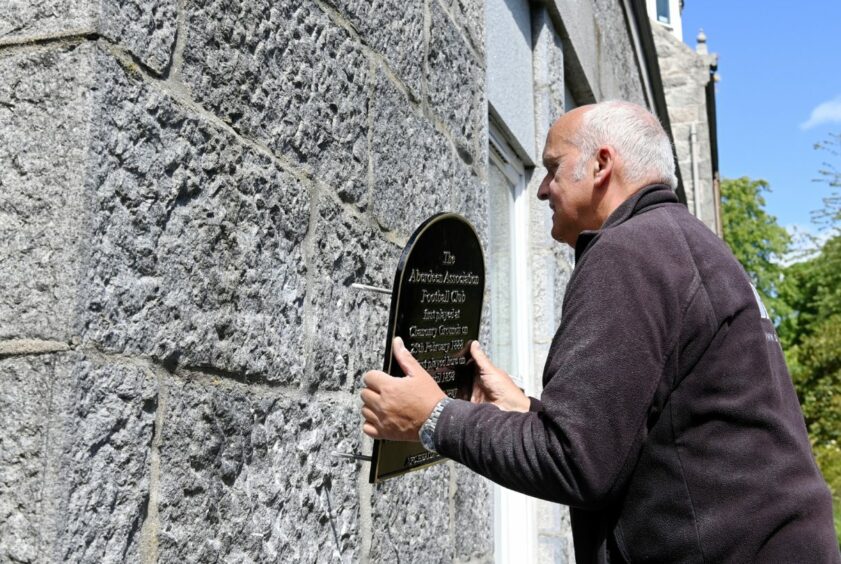
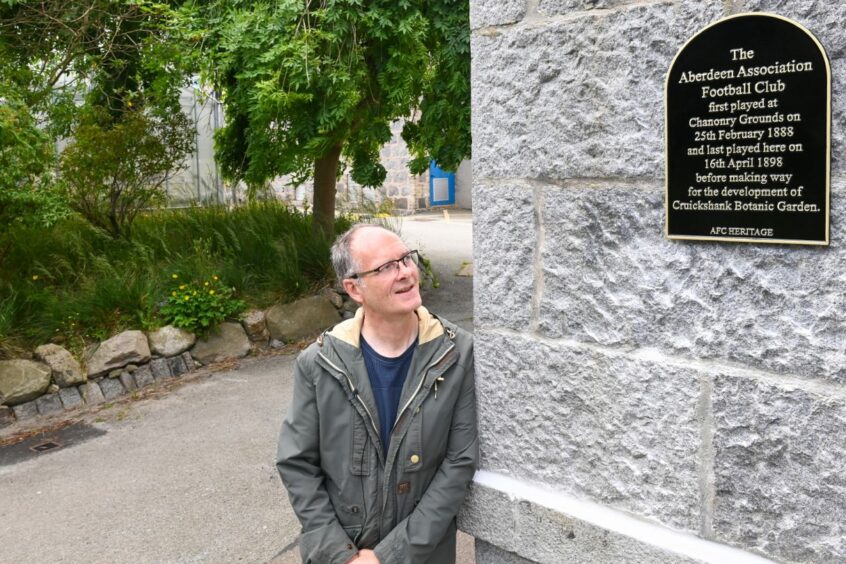
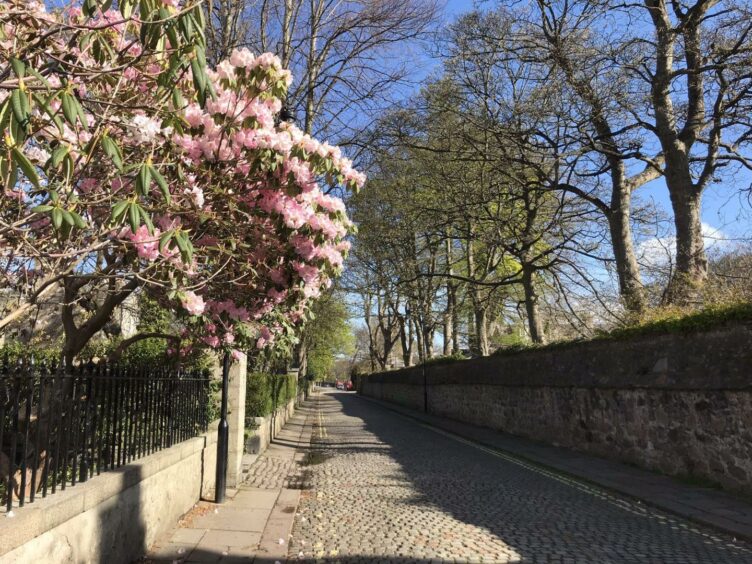
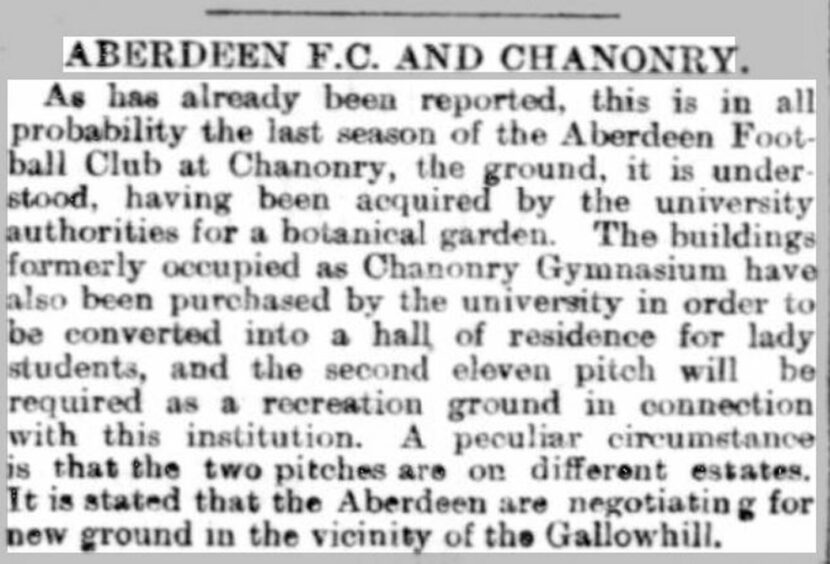
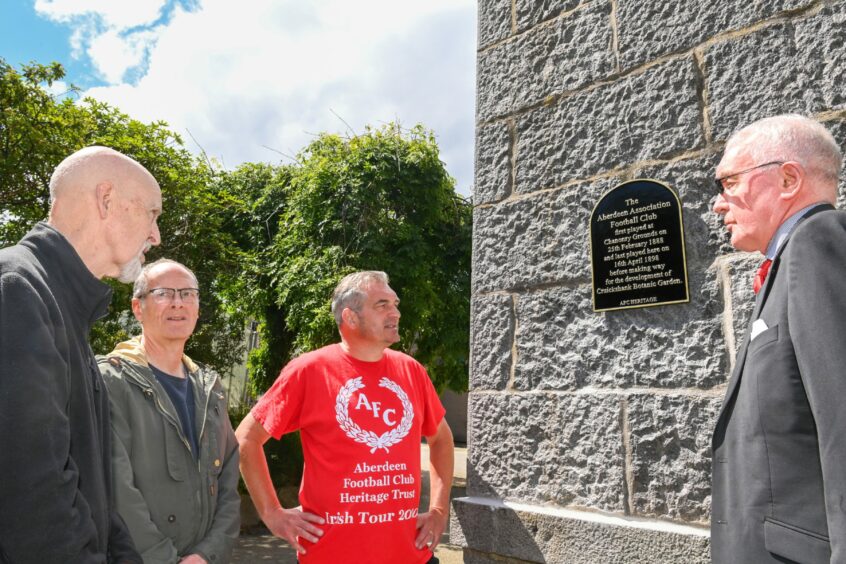
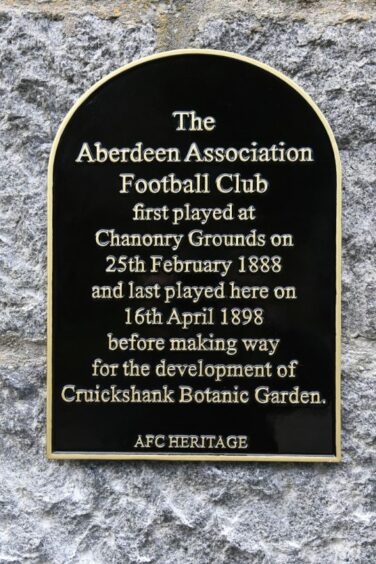










Conversation